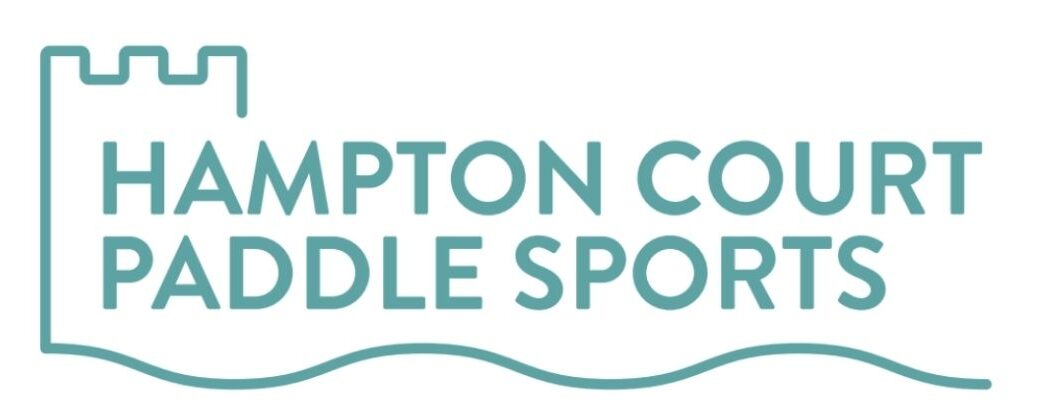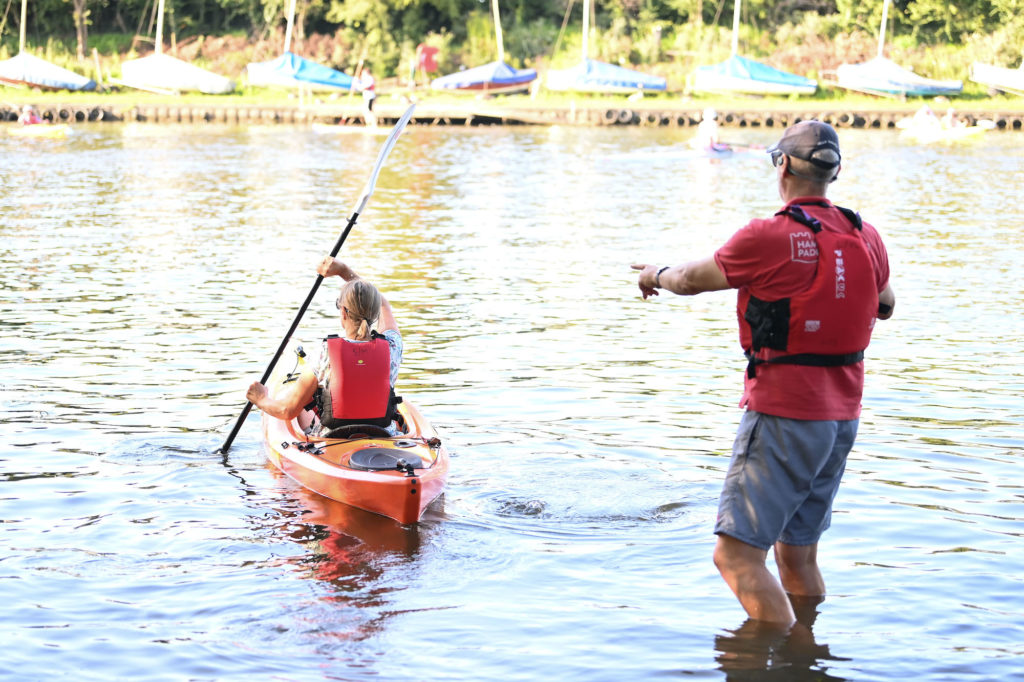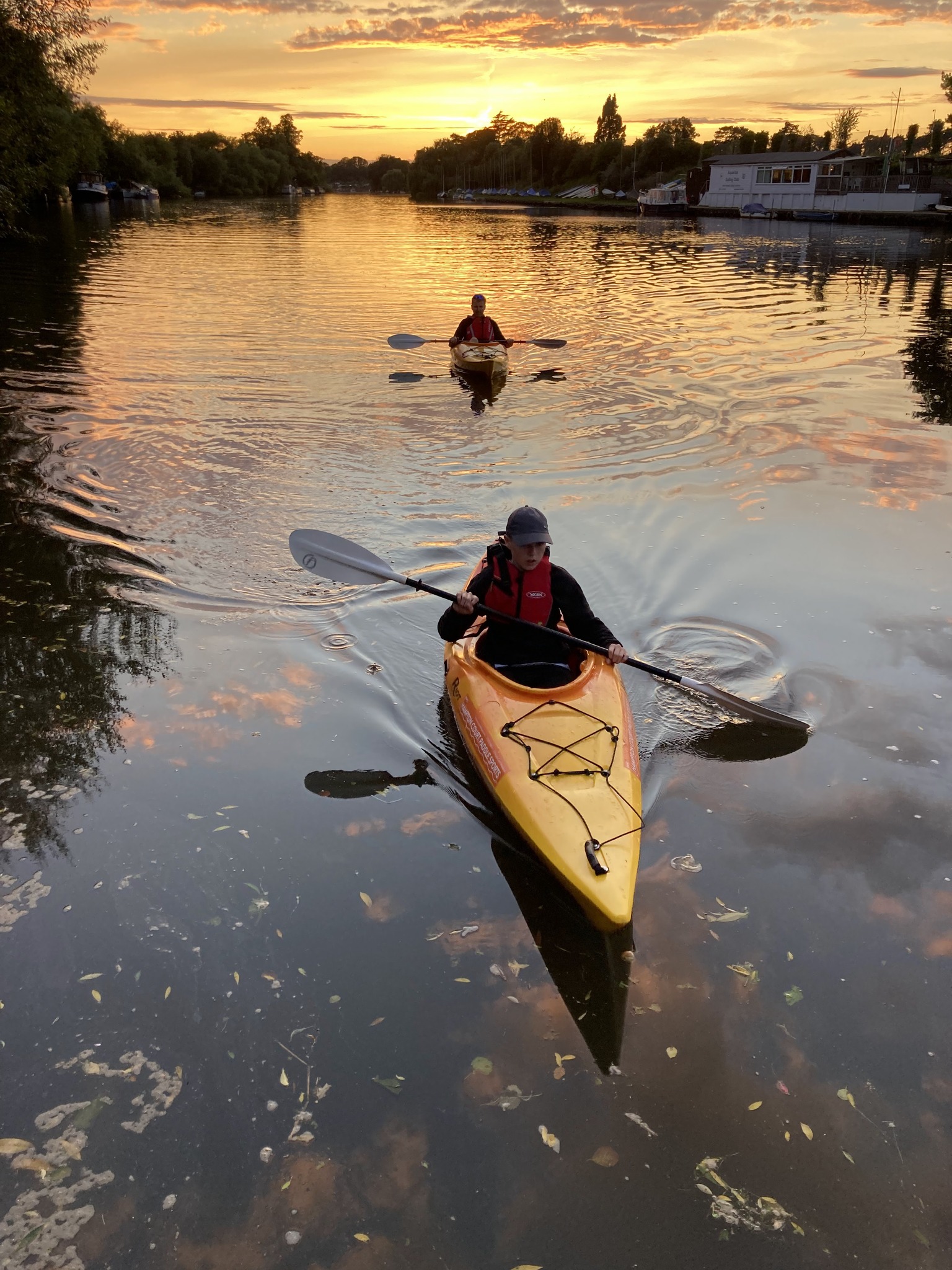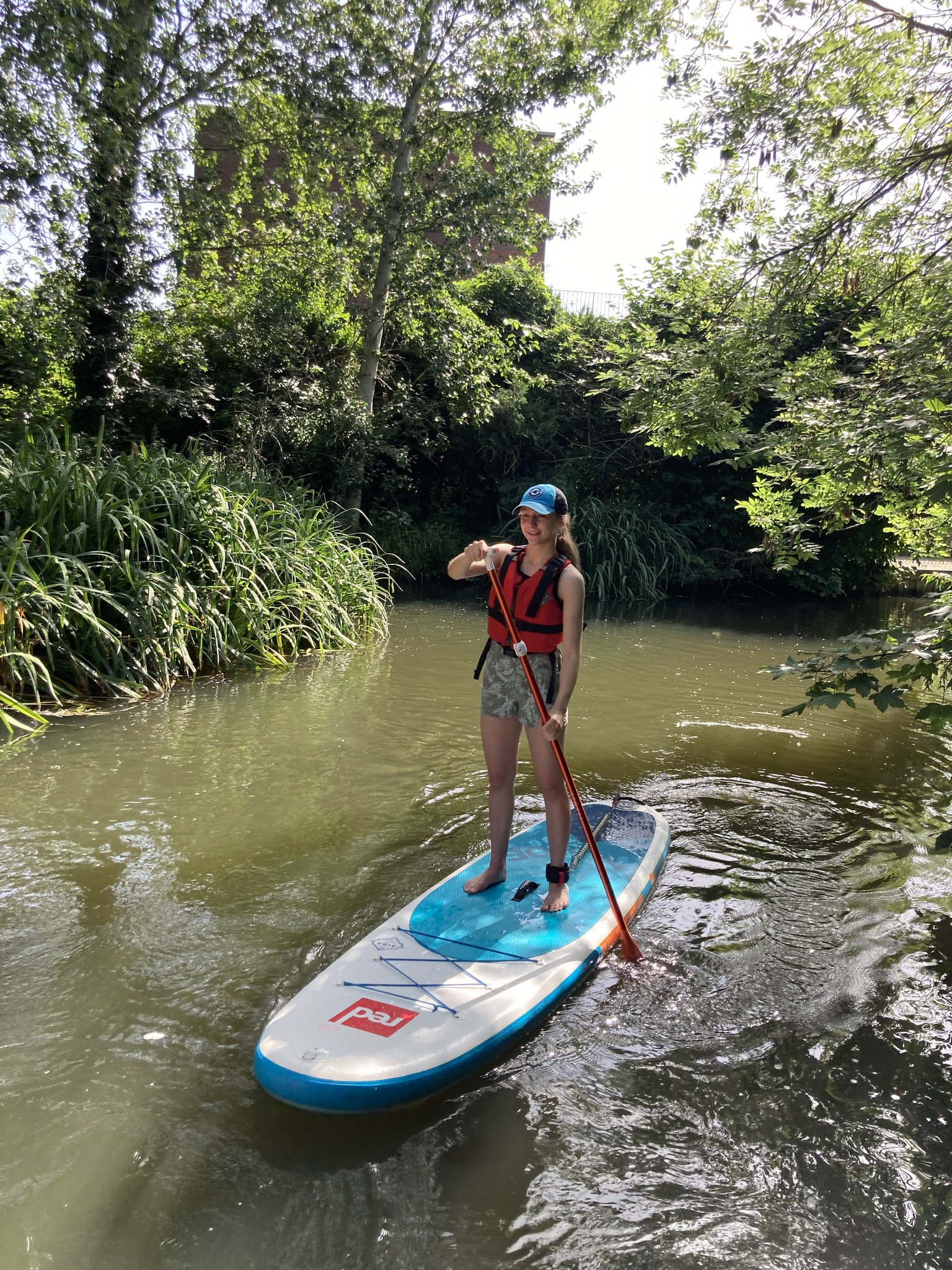You’ve tried it, you liked it, you want one! But which one? Kayaks come in many shapes and sizes, which can be very confusing. Start by asking yourself a few questions.
Kayak Types
Who is going to use it? How many people will use it? Would you like to paddle together in the same boat or alone? Is this going to be shared with family & friends? How water-confident are you?
Where will you mainly be paddling – on calm, slow-moving rivers and lakes, or do you want to get into more adventurous waters? Are you just thinking of the occasional pootle about or longer journeys where speed, comfort and carrying capacity might be important?
Do you have space to store a kayak and a vehicle to transport one? How much do you want to spend? Lets dig into the details..
Which kayak type is best?
The most basic difference between kayaks is sit-on-top versus sit-inside.
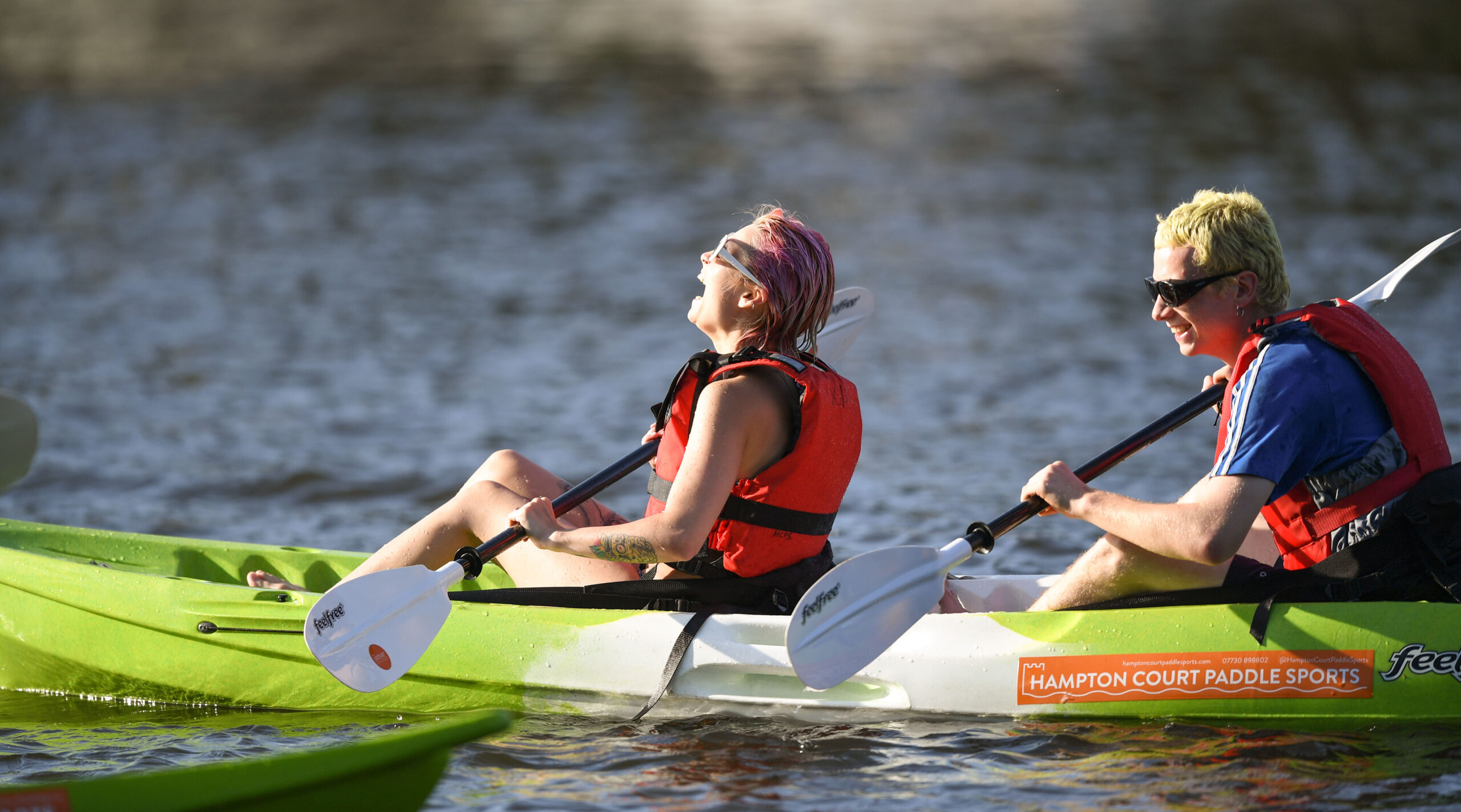
1. Sit-on-Top Kayaks
Sit-on-top kayaks are ideal for novice paddlers who are uncomfortable with the idea of being enclosed in a kayak’s cockpit and wary of getting stuck if the kayak capsizes.
Advantages
- Sit-on-top kayaks are much easier to exit and re-enter if the kayak capsizes due to their open cockpits. They are also much easier to enter and exit when exploring shorelines.
- Sit-on-top kayaks are often more stable in calm water than sit-inside kayaks due to their additional width.
- Sit-on-top kayaks have drainage holes (scupper holes), making them self-draining. They do not require a pump to empty the cockpit if the kayak capsizes – you simply flip the kayak the right way up, clamber aboard and carry on paddling.
Disadvantages
- Sit-on-top kayaks expose the paddler to sun, wind, and spray due to their open cockpits. The scupper holes also allow water in, guaranteeing a wet backside! (it is possible to block the scupper holes with bungs, something we here at Hampton Court Paddle Sports – we are paddling on flat water with little risk of capsize)
- Sit-on-top kayaks can become unstable in waves or rough seas due to their width and high center of gravity.
- Sit-on-top kayaks generally have less efficient hull designs than sit-inside kayaks, meaning they are slower and require more energy to propel.
- Sit-on-top kayaks are more difficult to control and turn because of the lack of contact points between the paddler and the kayak.
- Sit-on-top kayaks have less dry storage space than sit-inside kayaks.
- Sit-on-top kayaks are generally significantly heavier than sit-inside kayaks, and thus, they are more difficult to load and unload.
- If you like the sound of a sit-on-top kayak, you can try one out with a hire.
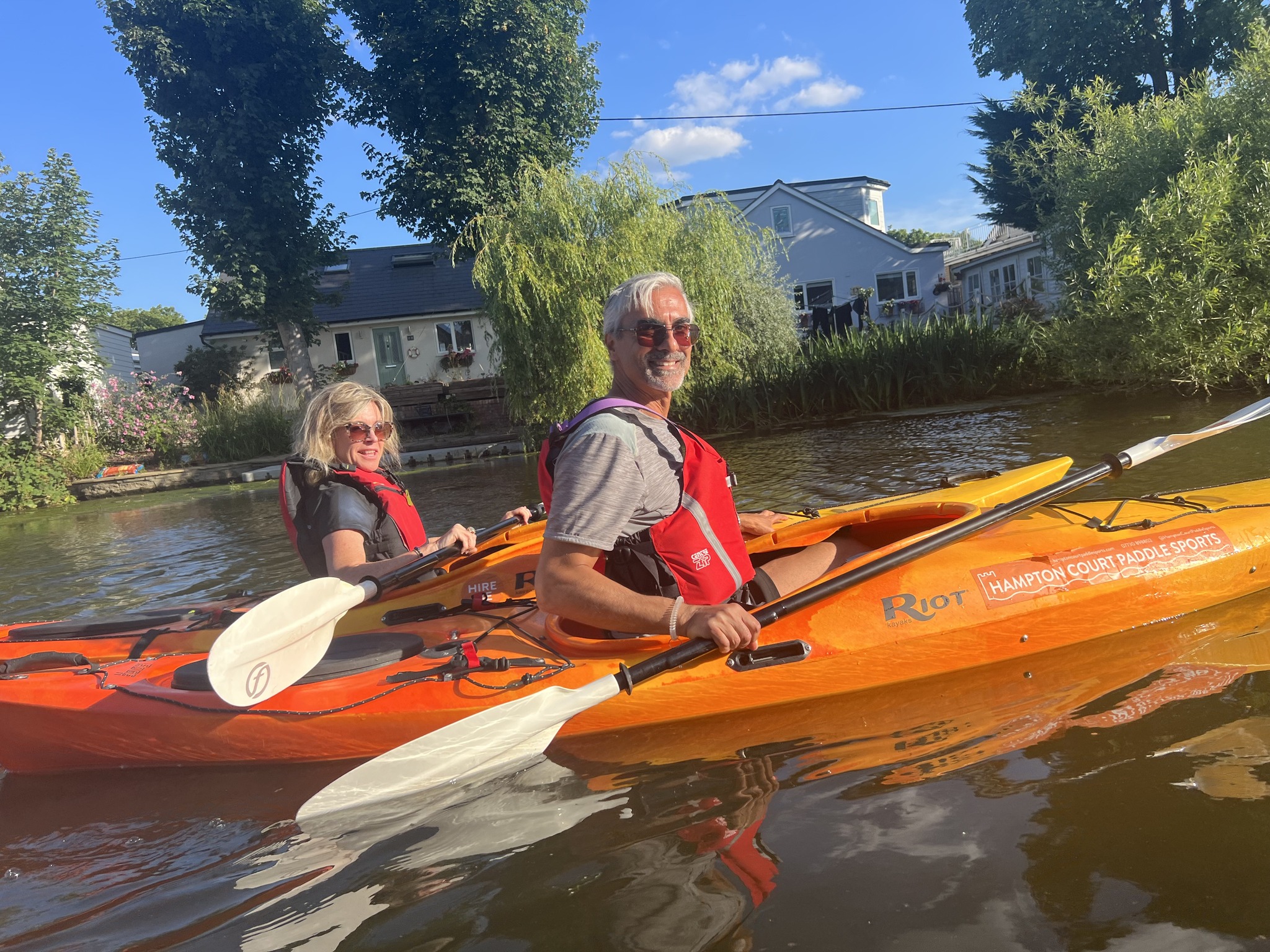
2. Sit-inside Kayaks
As the name suggests, you sit inside these kayaks rather than on top
Advantages
- Sit-inside kayaks are much more stable in rough water and waves than sit-on-top kayaks due to their lower centre of gravity and narrower width (beam). Basically, your backside is closer to the waterline.
- Sit-inside kayaks generally have more efficient hull designs, are faster and require less energy to propel.
- Sit-inside kayaks are easier to control and turn because the paddler can wedge themselves in by applying pressure to the foot pegs with their feet, the underside of the deck with their knees, and the back-band with their lower back. It’s a full-body experience if you want it to be!
- Sit-inside kayaks protect the paddler from sun, wind, and spray due to their closed cockpits. Plus, a spray skirt can be attached to the cockpit rim to protect the paddler fully, prevent water from entering the cockpit, and stop heat from escaping; it is particularly useful in colder weather and rain and essential if paddling in the sea.
- Sit-inside kayaks tend to have more dry storage space than sit-on-top kayaks.
- Sit-inside kayaks are generally lighter than sit-inside kayaks, making them easier to load and unload.
Disadvantages
- Sit-inside kayaks are more difficult to exit and re-enter if the kayak capsizes, and they are also more difficult to enter and exit when exploring shorelines.
- Sit-inside kayaks can require more skill for the paddler to remain upright due to being narrower.
- Sit-inside kayaks lack scupper (drainage) holes and require a bilge pump to empty the kayak if the cockpit becomes swamped during a wet exit.
Fancy trying one out? Hires are available every day.
Summary of kayak types
Sit-on-top kayaks are a good choice for beginners who want to be able to enter and exit their kayaks easily and who plan on paddling on small, calm bodies of water over relatively short distances. In addition, they are by far the most popular choice among kayak fishermen due to their open cockpits.
However, they are not well suited to paddling in rough seas or waves because they are easily capsized in such conditions due to their high centre of gravity and width. In addition, they are often much slower than a sit-inside kayak of similar length, and thus, they require more effort to paddle.
Sit-inside kayaks are a better choice for ambitious beginners and intermediate and expert paddlers who want to paddle large bodies of water and/or paddle over longer distances because they give the paddler much greater control and significantly more speed. In addition, they are a better choice when paddling in wind and waves due to their lower profiles and narrower width. Many sit-in kayaks also have a retractable fin (skeg) to help track (paddling in a straight line) or a rudder that can assist with steering the kayak.
So, now that you know all about the differences between sit-inside and sit-on-top kayaks as well as the different categories of kayaks and places to paddle. It’s useful to look closely at some technical aspects of kayak design. Click here to read more about the technical stuff you must consider when buying your kayak.
